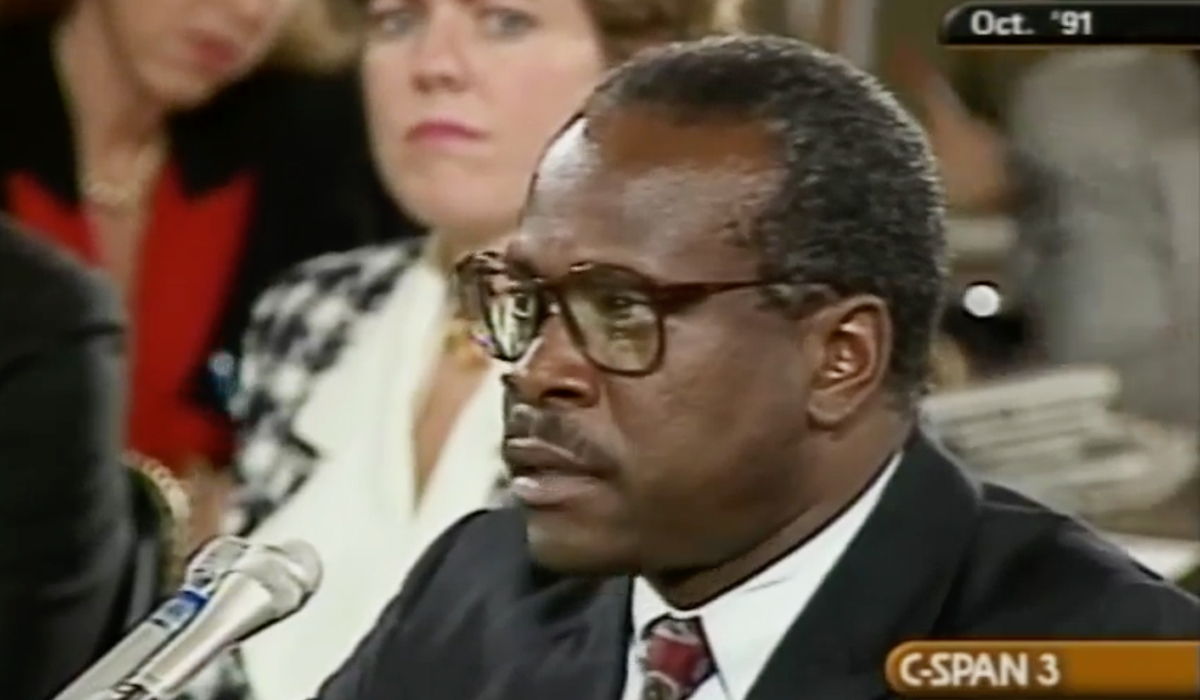Today marks the 30th anniversary of the 52-48 Senate vote to approve Clarence Thomas’s nomination to the U.S. Supreme Court. His first three decades on the Court provide much to study, evaluate, and learn from. And a look at the years before Thomas joined the Court shows that the principles which animate his judicial service have deep roots.
“I decided at the ripe old age of 16,” wrote Thomas in 1986, “that it was better to be respected than liked. Popularity is unpredictable and vacillating. Respect is constant and may lead to popularity but it is not dependent on it.” From that early age through more than four decades of public service in all three branches of government, Clarence Thomas has earned that respect by consistently holding to unshakeable principles despite relentless opposition from those threatened by such principles.
Exhibit A: an unyielding belief in the essential equality of individuals. Two days after Thomas’s Supreme Court nomination, a law professor wrote in the Los Angeles Times that “Thomas’s defining trait may be his commitment to the individual.” That belief, for example, shaped his tenure as the longest-serving chairman (1982-90) of the Equal Employment Opportunity Commission. His predecessor, Eleanor Holmes Norton, prioritized no-fault settlements of discrimination that produced enforcement statistics but did not investigate actual claims of discrimination, identify discriminatory employers, or seek relief for individual victims. Thomas changed course, describing his approach as “seeking full relief for every victim of discrimination who files a charge” of discrimination and actually “eradicate[ing] the discriminatory conduct.” The annual number of cases litigated by the EEOC on behalf of discrimination victims rose by 130 percent from 1982 to 1988.
Decades before the current push to replace equality with equity, columnist Juan Williams wrote that “[a]bove all else . . . Thomas refuses to see civil rights as a matter of corporate struggle and group equity.” A year later, contributing to a volume of essays that assessed the Reagan presidency, Thomas distinguished between “civil rights as a principle” and “civil rights as an interest.”
Where does this principle about individual equality lead? Shortly after taking the EEOC helm, Thomas wrote that “[o]ne of the essential functions of the federal government is to ensure that the civil rights of all Americans be protected. . . . Under our statutes and the Constitution, every individual is entitled to be judged on the basis of individual merit without consideration of group characteristics.” This view, of course, echoed what America’s Founders identified in the Declaration of Independence as the purpose of government to secure inalienable rights. Thomas has described the Constitution, in turn, as “a logical extension of the principles of the Declaration of Independence” and explained that “equality led to the principle of government by consent, limited government, majority rule, and separation of powers.”
Consistent with this view of limited government, Thomas believes in a judiciary restrained by the Constitution, not one that attempts to control it. He wrote in 1988, for example, that the Supreme Court purporting to create unenumerated constitutional rights would treat the Constitution as “a blank check. The Court could designate something to be a right and then strike down any law it thought violated that right.” This too echoed America’s Founders. Changing the meaning of the Constitution, Thomas Jefferson warned, would make a “blank paper” or a “mere thing of wax in the hands of the judiciary, which they may twist and shape into any form they please.”
In March 1990 President George H. W. Bush appointed Thomas to the seat on the U.S. Court of Appeals for the D.C. Circuit previously held by Judge Robert Bork. His 19 months on that court, which seems brief to some, was more judicial experience than many Justices had before their appointment. These include William Rehnquist, Lewis Powell, Byron White, Arthur Goldberg, Abe Fortas, and Chief Justice Earl Warren. According to legal analyst Gordon Crovitz, Thomas’s opinions on the D.C. Circuit were “textbook examples of judicial restraint.” He used “traditional tools” of statutory construction or constitutional interpretation, insisting that “federal judges . . . enforce [a] statute by ensuring that agencies comply with [its] procedures, and not by trying to coax agency decision-makers to reach certain results.” Thomas consistently rejected the legitimacy of “a roving judiciary” or “run-amok judges.”
On September 18, 1987, Thomas gave a speech at The Heritage Foundation in which he connected these principles. “Equality of rights, not of possessions or entitlements, offer[s] the opportunity to be free and self-governing. . . . [We] must acknowledge each other’s freedom, and govern only by the consent of others.” This is the foundation for our system of limited government, including a defined role for the judiciary. In Thomas’ words: “[I]t’s not my constitution to play around with. Let’s just start with that. We’re citizens. It’s our country, it’s our constitution. I don’t feel I have any particular right to put my gloss on your constitution. My job is simply to interpret it.”
President Andrew Jackson said that “eternal vigilance is the price of liberty.” Drawing from his own deep convictions, Justice Clarence Thomas has been vigilant, for 30 years and counting, about the principles that make our liberty possible.

How convenient it is to forget that Clarence Thomas allowed Monsanto to take American soybean farmers farms away from them legally because of wind blown seeds
Don’t believe me
See the 60 minutes program on it